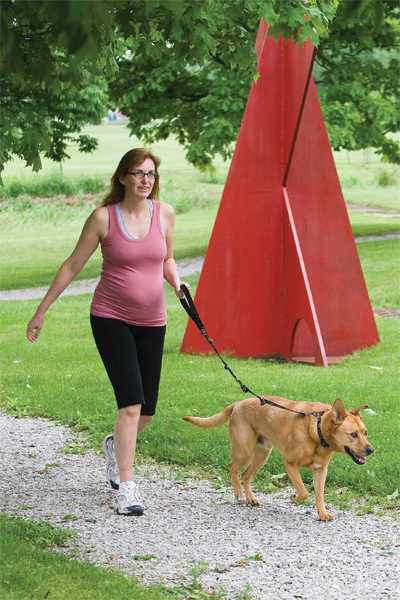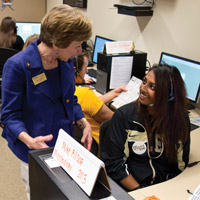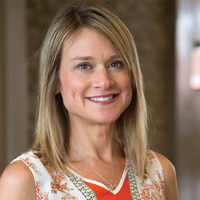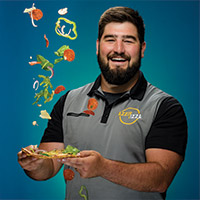The ultra importance of a child’s development in the first year of life cannot be overstated. From the physical to the cognitive, the social to the emotional, each developmental domain lays groundwork that can set a tone for a lifetime of better health.
As the College of Health and Human Sciences (HHS) turned 1 year old on July 1, 2011, several faculty members continued explorations in infant research. As researchers and clinicians, they began with questions. Can prenatal exercise have long-term health benefits on offspring? How can interventions be improved through the earliest detection of hearing loss? What pre-speech vocabulary do children possess? How can child care settings be evaluated and improved?
The answers to those questions — some still in discovery — may surprise you. A psychologist, in collaboration with an expert in speech, language, and hearing sciences, uses an iPad to learn more about what a toddler actually understands. The work of several researchers in human development and family studies underscores the importance of everyday relationships on a child’s well-being — inside and outside the home. And a health and kinesiology professor is even putting pigs on treadmills to test the cardiovascular health of their piglets.

Joellen Lewsader, a Ph.D. candidate in human development and family studies, puts Sean Newcomer’s research to the test. Newcomer, assistant professor of health and kinesiology, believes a fit mother could imprint long-term health benefits on her child.
Long-term Benefits of Prenatal Exercise
Sean Newcomer, assistant professor of health and kinesiology, believes that exercise during pregnancy could be impacting the long-term health of offspring. “We know the fetal environment during that first nine months is critical, and not just for the child at birth,” he says. “We’ve seen effects 40 years down the road. Cardiovascular disease susceptibility is greater in children from women who smoked or had poor nutrition during their pregnancies.”
Newcomer’s research, which looks at maternal exercise during pregnancy and the impact of cardiovascular health on offspring, is the first of its kind in attempting to find a positive side effect from pregnancy behavior. Through four months of gestation, pigs are treadmill-exercised for 20 to 45 minutes a day, five days a week, for 16 weeks at heart rates of 65-85 percent of maximum heart rate, which Newcomer says is consistent with recommendations for pregnant women.
“Unfortunately, only 50 percent of physicians recommend this level of exercise to women,” Newcomer says. “And of the women who are pregnant, only 15 percent are obtaining those levels. If we can demonstrate some positive health outcomes to the children, more mothers may start exercising.”
Preliminary data looks promising. Blood vessels of newborn pigs from exercise-trained mothers appear healthier and potentially will be more resistant to disease in the future, Newcomer says. In experiments three, six and nine months after birth, all signs also point to a healthier cardiovascular system in the piglets.
The next step would be to put these findings into practice. “We would like to start a community-based program here at Purdue by collaborating with obstetricians in Tippecanoe County,” Newcomer says.
With students serving as interns, women would exercise in cohorts in a supervised setting, participating in a variety of aerobic exercise modalities for 30 minutes a day. “In the future, cardiovascular health outcomes could be measured in their children,” Newcomer says. “It would be an excellent opportunity for both the community and Purdue to benefit from this research.”
Diagnosing Infant Hearing Loss
Graduate students, as well as families and babies in the community, are also benefiting from clinical support provided by HHS faculty. A trio of licensed professionals in the Department of Speech, Language, and Hearing Sciences can diagnose hearing loss in infants as young as 3 and 4 weeks old. Jennifer Simpson, clinical associate professor; Lata Krishnan, clinical professor; and Shannon Van Hyfte, clinical assistant professor, are certified by First Steps, the State of Indiana’s early intervention system for infants and toddlers with special needs.
Shortly after birth, babies are given a pass/fail hearing test. Infants who fail are sent to an audiologist like Simpson, who then performs a diagnostic test to determine any levels of hearing loss.
“Most babies pass the test, but there are a handful with some degree of hearing loss,” says Simpson, who estimates that of the 100-150 infants they test annually, maybe five to 10 have some permanent loss.
Once a hearing loss is determined, Simpson refers the family to an ear, nose and throat physician. With medical clearance, she can make an impression of the infant’s ears and send that material to make tiny ear molds.
“A small hearing aid goes behind the ear,” Simpson says. “We then need to replace the ear mold every three months because they grow so fast.”
In the last few years the push to identify affected children early has led to early intervention with the available technology, Simpson says. A baby with severe to profound hearing loss may be eligible for a cochlear implant. For any child identified with a hearing loss, monitoring tests every three to six months are crucial.
The clinic itself has become a perfect learning laboratory for graduate students. As director of clinical education in audiology, Simpson also teaches classes and serves as the liaison to the Indiana University School of Medicine, where fourth-year students rotate through four Indianapolis hospitals.











